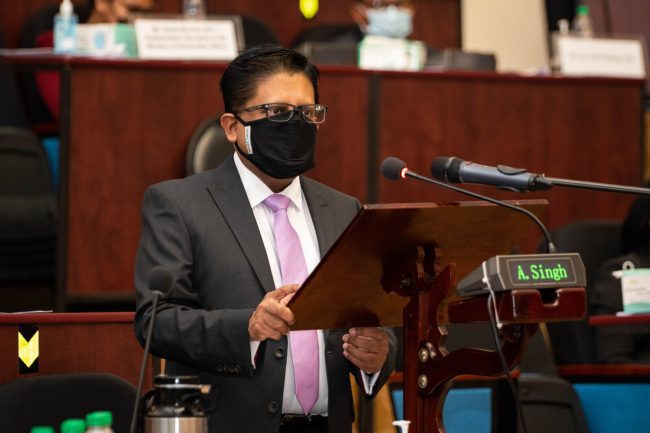The government of Guyana introduced its updated Low Carbon Development Strategy (LCDS) 2030 last year, with a vision for the country’s sustainable growth. As it embarks on this strategy, it will build on a major climate resilience project to bring the initial LCDS to a close.
Presenting the 2022 Budget to the Parliament in January, Minister of Finance Dr. Ashni Singh said government will allocate the balance of funds it received from Norway for conserving its forests, for this purpose. The money is sitting in the Guyana REDD+ Investment Fund (GRIF).
Forests: the key to Guyana’s low carbon development strategy | OilNOW
“When combined with investment income, this totals just around US$54 million,” Dr. Singh had said. Alongside the requisite institutional strengthening, the Minister revealed that the majority of this sum will be invested in building out major new outfall channels in Regions 5 and 6, similar to the Hope Canal.
The rehabilitation of the Hope Canal was done under the previous LCDS. Guyana had suffered from a catastrophic flooding event in 2005, demonstrating the significance of the risk Guyana’s coast faces.
The Hope Canal is one of the channels that support the drainage of the East Demerara Water Conservancy (EDWC) into the Demerara River and helps to prevent the risk of water levels exceeding the safe operating level of the conservancy dam through overtopping or catastrophic breaching and flooding.
The EDWC is 571 square-kilometre reservoir which stores approximately 250 million cubic metres of water at the maximum safe operating level. The conservancy protects various parts of Guyana, including Georgetown, as well as the East Coast and East Bank of Demerara.
Discharge from the Hope Canal had been re-established, when tragic floods hit in 2005, after over a decade of disuse, but with a limited capacity. Its rehabilitation was necessary because leading up to its disuse, it was diverted from its original alignment to a small discharge channel, and was affected by circuitous routing and structural limitations.
Rehabilitation of the canal was necessary because of the extent of losses posed to the coast when floods hit. The draft LCDS 2030 document states, “About 39% of Guyana’s population and 43% of [Gross Domestic Product] are in regions exposed to significant flooding risk, and extreme weather events that are increasing in frequency.”
The project, a significant achievement for adaptation efforts, increased the capacity of the canal to drain the EDWC, one of Guyana’s most important natural drainage and irrigation and flood control mechanisms. In addition to draining the Conservancy, the rehabilitated canal is also better at draining agricultural areas surrounding it.
Vice President Dr. Bharrat Jagdeo repeatedly hails this project as one of the great accomplishments of the People’s Progressive Party Civic (PPP/C). The need for more projects like this one came squarely back into focus after floods hit in 2021. President Dr. Mohamed Irfaan Ali called the 2021 flooding event the worst natural disaster in Guyana’s history.
Dr. Singh said that once the government completes work on these channels, it can refocus on a vision for Guyana’s future.




